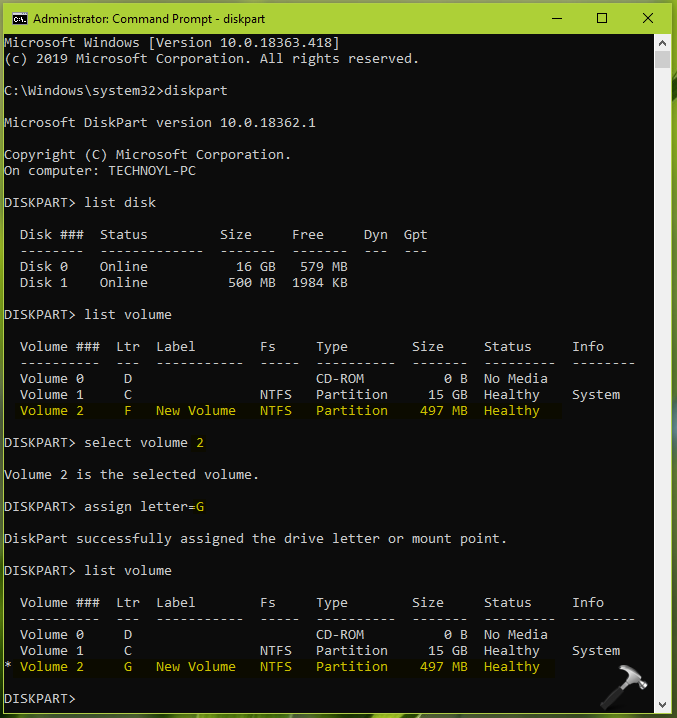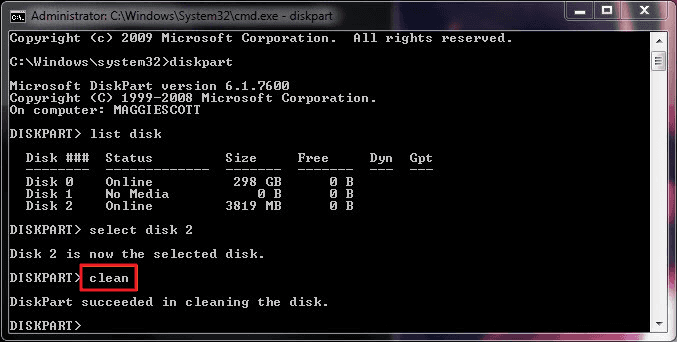

- #WINDOWS SERVER RAW DRIVE CHANGE DISK NUMBER HOW TO#
- #WINDOWS SERVER RAW DRIVE CHANGE DISK NUMBER INSTALL#
- #WINDOWS SERVER RAW DRIVE CHANGE DISK NUMBER SOFTWARE#
- #WINDOWS SERVER RAW DRIVE CHANGE DISK NUMBER FREE#
- #WINDOWS SERVER RAW DRIVE CHANGE DISK NUMBER WINDOWS#
To do this, run the following command: FSExtend Then, run FSExtend on the drive to extend the file system. Run the following command on the disk to fix any errors on the disk: chkdsk /f Īfter chkdsk is completed successfully, restart the server. To do this, run the following command: chkdsk d: /l: 65536 /f

#WINDOWS SERVER RAW DRIVE CHANGE DISK NUMBER FREE#
If you can access the disk, you should free up some free space and then return the NTFS transaction log to the default value of about 65 MB. To shrink the NTFS transaction log to 4 MB, run the following command: chkdsk d: /l:4096 /fĭetermine whether you can access the disk. Then, the disk will have enough space to mount the volume. If there is too little disk space to mount the volume, shrink the NTFS transaction log to 4 MB. To resolve this issue, use one of the following methods. There is not enough disk space for the file system extend.The file system structure on the disk is corrupted.The issue occurs because of one of the following reasons: Please run the chkdsk utility on the volume : Cause The file system structure on the disk is corrupt and unusable. However, when you run chkdsk, the file system is shown as NTFS.Īdditionally, you see the following error message in the System log: When you extend a volume by using FSExtend, the volume may show as raw in disk management.
#WINDOWS SERVER RAW DRIVE CHANGE DISK NUMBER WINDOWS#
It will help you recover any existing files on your RAW hard drive, USB flash drive, memory card, etc.This article provides solutions to an issue where a volume shows as raw in disk management but chkdsk shows the file system as NTFS after you extend the partition.Īpplies to: Windows Server 2012 R2 Original KB number: 2261358 Symptoms
#WINDOWS SERVER RAW DRIVE CHANGE DISK NUMBER SOFTWARE#
EaseUS data recovery software supports deleted file recovery, formatted file recovery, RAW drive recovery, and more. If the drives must be striped (multiple physical disks combined into one logical disk). Recover Data from RAW Drive with EaseUS Data Recovery WizardĪlthough the RAW drive is inaccessible when you try to open it, you can recover data from the storage medium with the help of hard drive recovery software - EaseUS Data Recovery Wizard. To find the drive letter or disk number, run the Disk Administrator.
#WINDOWS SERVER RAW DRIVE CHANGE DISK NUMBER INSTALL#
So If you install a new drive and put it in place of the other drive (Disk 0) you need to check your bios and make sure it is the first Hard Drive in the boot order if you want it to show as Disk 0 in Disk Management. Watch the guide and follow the detailed steps below to fix a drive with a RAW file system.Īs mentioned above, you may be prompted to format the RAW drive in order to make it ready for data storage and access. The first Drive with a Windows OS will be listed as C: and as Disk 0 In Disk Management.
#WINDOWS SERVER RAW DRIVE CHANGE DISK NUMBER HOW TO#
Here's a video tutorial about how to convert RAW file system to NTFS and how to recover data from a RAW system. Besides, there are some error messages you may encounter when you try to open the device or run CHKDSK on it, like " you need to format the disk in drive before you can use it" and "The type of the file system is RAW, CHKDSK is not available for RAW drives." How to Fix a Drive with RAW File System The RAW file system can be caused by a number of reasons such as virus infection, format failure, accident shutdown of the operating system, power outages, etc. When a hard drive or external storage device becomes RAW, your device is unusable and you cannot access the files stored on it.
When a hard drive or external storage device becomes RAW, it could be:

A disk or drive with a RAW file system is what we called as RAW disk/drive. RAW file system indicates a state of your hard drive which has no or unknown file system. Without a file system, you cannot access and open a storage medium, be it a hard drive, USB flash drive, SD card, and more. A file system, like NTFS, FAT32, and exFAT, controls how data is stored and retrieved.


 0 kommentar(er)
0 kommentar(er)
